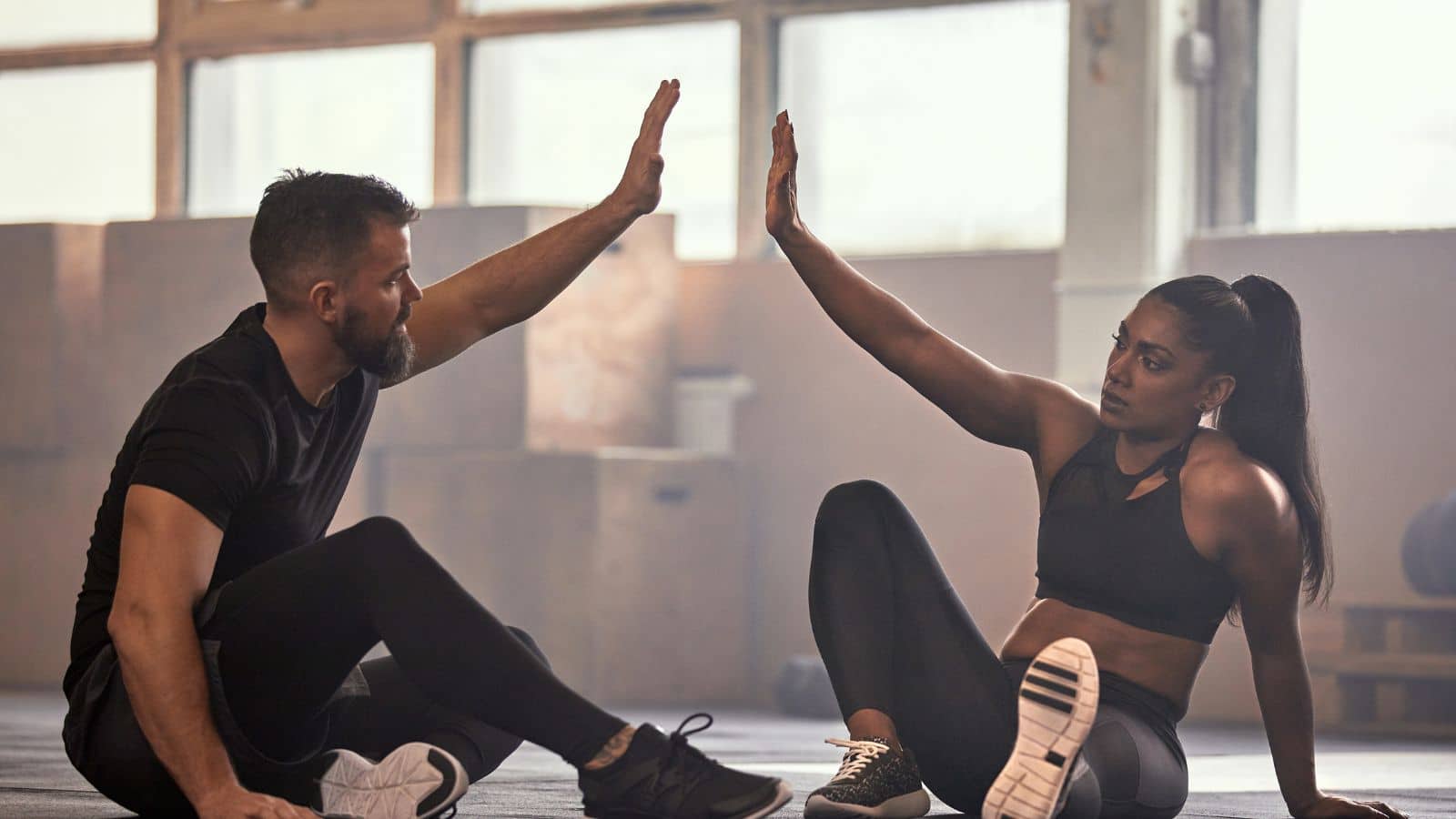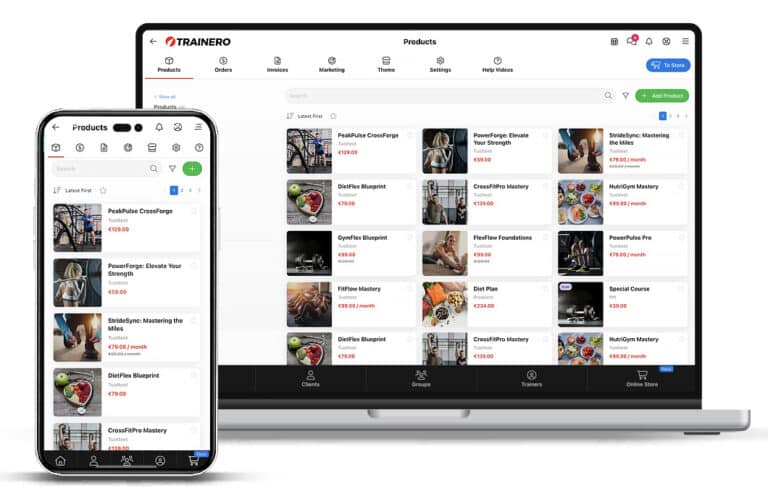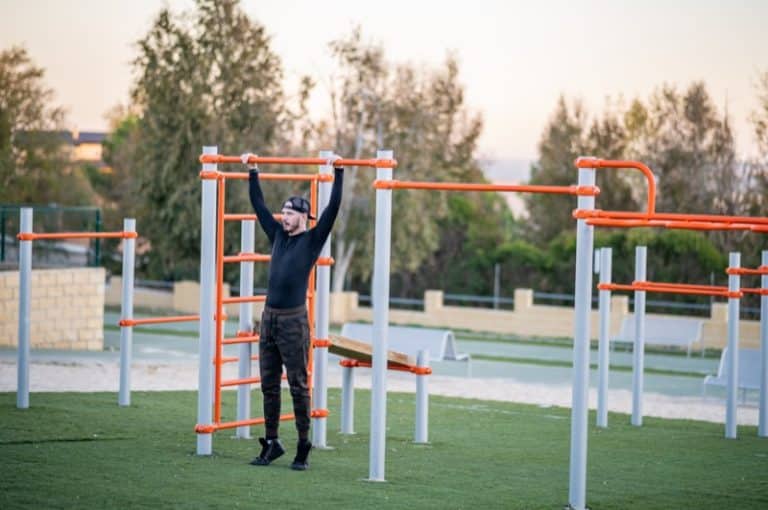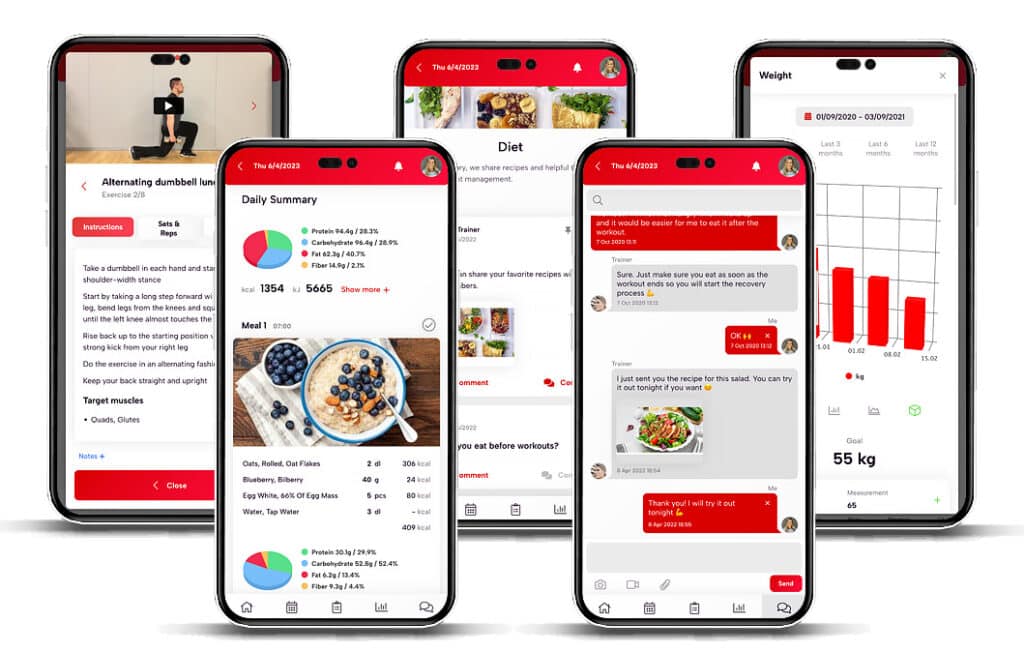Fitness Business: Your Guide to Referrals & Testimonials
One of the most effective ways to achieve this is through the power of referrals and testimonials. This article serves as your comprehensive guide to understanding how to ask for testimonials, the importance of these testimonials for your fitness business, and strategies for generating referrals from your current clients. Whether you are a personal trainer, gym owner, or fitness program manager, this guide will provide you with the tools you need to enhance your marketing efforts and boost your client base.

Unlock your fitness potential with Trainero! Get a 14-day free trial and access personalized workout plans, expert coaching, and progress tracking—all in one app. No commitments, just results. Start your free trial today and take your fitness journey to the next level!

How to Ask Clients for Testimonials for Your Fitness Business?
What is the best way to ask for a testimonial?
Asking for testimonials for your fitness business can be a delicate process, but with the right approach, it can yield fantastic results. The best way to ask for a testimonial is to do so at a time when your clients are feeling particularly satisfied with their progress. After a successful training session, or when they achieve a milestone in their fitness journey, is an ideal moment. You can approach them in person, send a text message, or follow up via email. Make sure to personalize your request by mentioning specific accomplishments they’ve made, which will make them feel valued and appreciated.
When should I ask for a testimonial?
Timing is everything when it comes to requesting testimonials. Ideally, you should ask for a testimonial after a client has experienced a significant result, such as completing a challenging program or achieving a personal fitness goal. This could be after several months of training or following a successful transformation. Ensuring that your clients are in a positive mindset will increase the likelihood of them willingly writing a review or sharing their experience on social media. Additionally, consider the timing of your request in relation to your business’s marketing campaigns; aligning these moments can maximize the impact of their testimonials.
What should I include in my request for a testimonial?
Your request for a testimonial should be clear and concise, while also expressing your genuine appreciation for their feedback. Start by thanking them for their commitment to your fitness program and mention how their input can help other potential clients make informed decisions. Include specific questions that guide them on what to write about, such as their progress, their experience working with you, or how your services have helped them reach their fitness goals. This structured approach not only makes it easier for clients to provide a testimonial but also ensures that you receive content that is useful for marketing. Encourage them to share their testimonials on your website, social media, or in your email newsletter.
Why Are Testimonials Important for Your Fitness Business?
How do testimonials build trust with potential clients?
Testimonials serve as powerful endorsements that can significantly build trust with potential clients. In the fitness industry, trust is paramount. Prospective clients are often skeptical about whether a personal trainer or gym can deliver the promised results. By showcasing authentic testimonials from satisfied clients, you provide social proof that your services are effective. When potential clients see real people sharing their success stories, it alleviates their concerns and encourages them to take the plunge into your fitness programs. Positive testimonials create an emotional connection and foster a sense of credibility that can be difficult to achieve through advertising alone.
What are the benefits of using testimonials in marketing?
Using testimonials in your marketing strategy offers numerous benefits. Firstly, testimonials enhance your brand’s credibility, making it easier to attract new customers. They can be utilized in various marketing materials, from your website and social media to print advertising and email newsletters. This versatility allows you to reach a broader audience. Additionally, testimonials can improve your search engine optimization (SEO) by providing fresh content, which can lead to higher rankings on Google. Incorporating testimonials into your marketing efforts not only highlights your expertise in the fitness industry but also showcases the positive impact your services have had on clients’ lives.
How can testimonials affect your client retention rates?
Client retention is vital for any fitness business, and testimonials play a significant role in this aspect. When clients share their success stories through testimonials, it reinforces their commitment to your fitness programs and fosters a supportive community. When existing clients see their peers being recognized for their progress, it creates a motivating environment that encourages them to continue their training. Moreover, clients who feel appreciated and acknowledged for their achievements are more likely to stick around, leading to lower churn rates. By actively displaying and celebrating testimonials, you create a culture of success and accountability that keeps clients engaged in their fitness journey.
How to Effectively Display Testimonials for Your Fitness Business?
Where should I display testimonials on my website?
Displaying testimonials effectively on your website is crucial for maximizing their impact. A dedicated testimonials page can serve as a powerful showcase of client success stories, but it’s also important to integrate testimonials throughout your website. Place a few choice testimonials on your homepage to grab the attention of visitors immediately. Additionally, consider including testimonials on service-specific pages, such as those for personal training, group classes, or nutrition programs. This approach helps potential clients see the direct benefits of the specific services they are interested in. Using visually appealing designs, such as quotes in attractive text boxes or video testimonials, can further enhance their effectiveness.
Should I use video testimonials or written testimonials?
Both video testimonials and written testimonials have their unique advantages in the fitness industry. Video testimonials can create a more personal connection, as potential clients can see the emotions and enthusiasm of the individuals sharing their experiences. This format can be particularly engaging and can effectively convey the energy of your fitness programs. On the other hand, written testimonials are easier to incorporate into various marketing materials and can be skimmed quickly by potential clients. A balanced approach that includes both formats can be highly effective; using video testimonials on social media and your website, while featuring written testimonials in email newsletters and promotional materials, can reach a wider audience.
How can I include testimonials in my email newsletter?
Incorporating testimonials into your email newsletter is a fantastic way to keep your current clients engaged and attract new customers. When crafting your newsletter, consider highlighting a “Client Spotlight” section where you feature a different client’s success story each month. This could include their testimonial, a brief overview of their fitness journey, and even a photo. Additionally, you can include snippets of testimonials throughout your newsletter to reinforce the effectiveness of your programs. Encourage your clients to share their experiences and include a call-to-action for readers to sign up for your services, enhancing the likelihood of conversions.
Steps to Generate Referrals from Your Current Clients?
How can I incentivize clients to refer new clients?
Creating a referral program is an effective way to incentivize your current clients to refer new clients to your fitness business. Consider offering rewards such as discounts on future training sessions, free classes, or merchandise for each successful referral. These incentives motivate clients to share their positive experiences with friends and family. You could also implement a tiered reward system, where clients receive greater rewards for multiple referrals. Ensure that you communicate the details of your referral program clearly, whether through email, social media, or during training sessions, so that clients know how to participate and benefit.
What messaging should I use when asking for referrals?
When asking for referrals, your message should be friendly, straightforward, and appreciative. Acknowledge your clients’ contributions to your fitness community and express how much their support means to you. For example, you can send a personalized email or text message thanking them for their loyalty and asking if they know anyone who might be interested in your services. Make sure to include a brief reminder of the benefits they have experienced and the results they’ve achieved, which can motivate them to share your services with others. Additionally, include a direct link to your website or social media pages for easy sharing.
How do I track referrals effectively?
Tracking referrals is essential for understanding the effectiveness of your referral program and ensuring clients receive their incentives. One of the easiest ways to track referrals is through a referral code system; assign unique codes to each client that they can share with potential new clients. Alternatively, you can utilize forms on your website where new clients can indicate who referred them. Additionally, consider using client management software that allows you to log referrals and track their progress. Regularly review this data to assess the success of your referral program and make adjustments as necessary to optimize results.
What to Do with Negative Testimonials in Your Fitness Business?
How should I respond to negative testimonials?
Negative testimonials can be challenging, but they also present an opportunity for growth and improvement. When responding to negative feedback, it’s essential to remain professional and empathetic. Acknowledge the client’s concerns and express your willingness to resolve the issue. Invite them to discuss their experience further, either through a private message, email, or a phone call. This approach shows that you value their feedback and are committed to providing excellent service. By addressing the issue publicly, you also demonstrate to potential clients that you are proactive and open to constructive criticism.
Can negative reviews be turned into a positive outcome?
Yes, negative reviews can indeed be turned into a positive outcome if handled correctly. By responding promptly and effectively to negative testimonials, you have the chance to showcase your commitment to client satisfaction. If you resolve the issue satisfactorily, the client may even update their review to reflect their newfound appreciation of your service. Furthermore, potential clients who read your response can see how you handle criticism, which can enhance their trust in your fitness business. Transforming a negative experience into a positive outcome illustrates your dedication to continuous improvement, ultimately strengthening your brand’s reputation.
What steps can I take to prevent negative testimonials in the future?
Preventing negative testimonials in your fitness business requires a proactive approach to client satisfaction. First and foremost, prioritize open communication with your clients; regularly check in with them to gauge their satisfaction and address any concerns before they escalate. Additionally, ensure that you set clear expectations about your services and programs, so clients know what to expect from their training sessions. Providing excellent customer service and creating a supportive community can also go a long way in minimizing negative feedback. Finally, actively seek feedback through surveys or informal check-ins, which can help you identify areas for improvement and enhance the overall experience for your clients.










